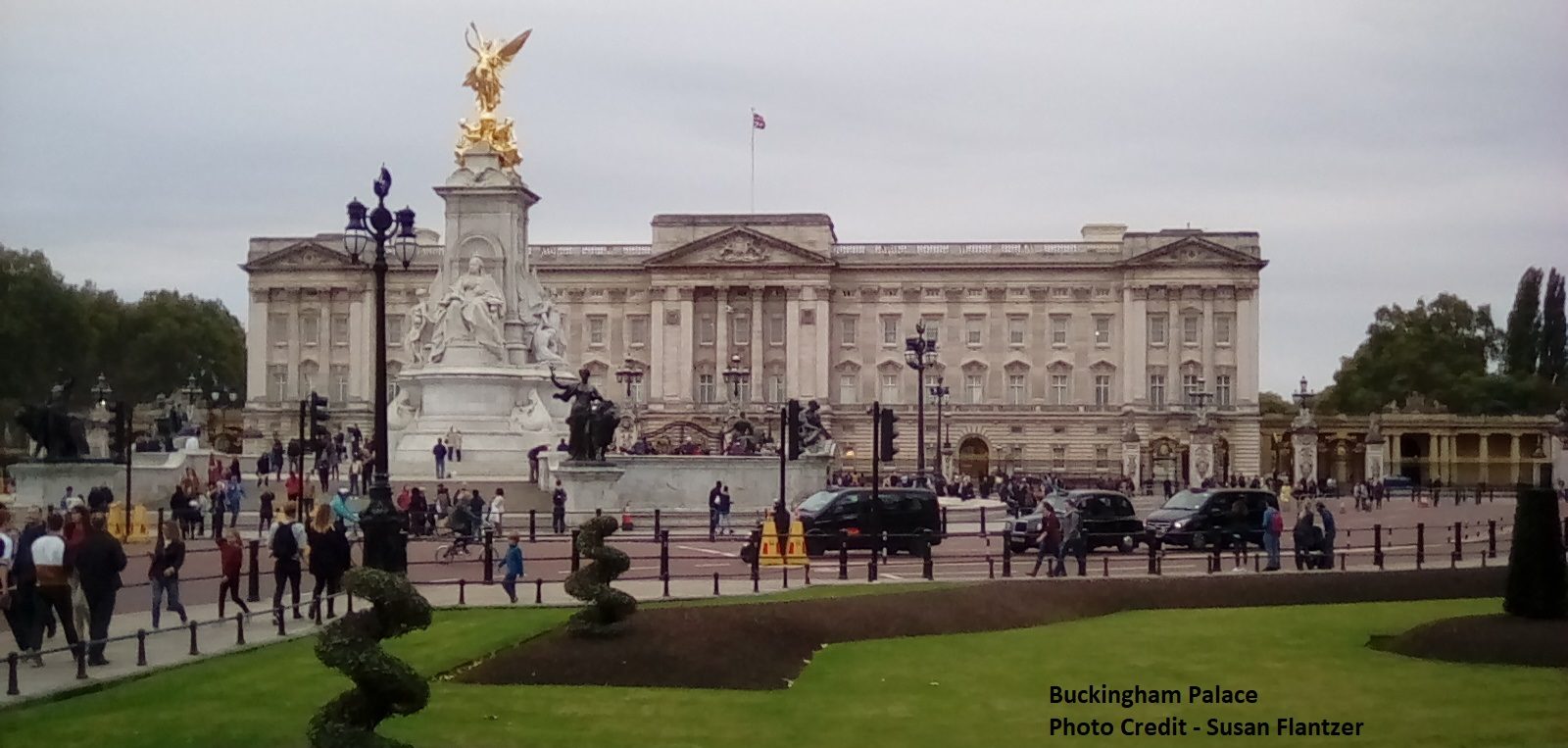© Unofficial Royalty 2025

Princess Alice of Battenberg, wife of Prince Andrew of Greece and mother of Prince Philip, Duke of Edinburgh; Credit – Wikipedia
February 25, 1475 – Birth of Edward Plantagenet, 17th Earl of Warwick, son of George Plantagenet, Duke of Clarence and Isabel Neville, at Warwick Castle in Warwickshire, England
Because he was a potential claimant to the English throne during the reign of King Henry VII, the first Tudor monarch of England, Edward Plantagenet, 17th Earl of Warwick was beheaded. His only surviving sibling Margaret Pole, 8th Countess of Salisbury had the same ending during the reign of King Henry VIII.
Unofficial Royalty: Edward Plantagenet, 17th Earl of Warwick
February 25, 1558 – Death of Eleanor of Austria, third wife of King Manuel I of Portugal and second wife of King François I of France, in Talavera la Real, Spain; buried at the Monastery of San Lorenzo El Real in El Escorial, Spain
Eleanor was the eldest of the six children of Philip (the Handsome), Duke of Burgundy and Joanna, Queen of Castile and León and Queen of Aragon. Her two brothers were Kings and Holy Roman Emperors and Eleanor and her three sisters were all Queen Consorts In 1518, 19-year-old Eleanor became Queen of Portugal when she married 49-year-old Manuel I. The couple had one surviving daughter. After Manuel’s death from the plague in 1521, Eleanor remained unmarried for nine years. To seal a treaty between the Holy Roman Empire and France, François I, King of France, a widower for several years, agreed to marry Eleanor, the sister of Holy Roman Emperor Charles V. Eleanor and François were married in 1530. Eleanor was ignored by François I who preferred his mistresses. Needless to say, Eleanor and François had no children. Eleanor died on February 18, 1558, at the age of 59. Her siblings Charles and Mary also died in 1558. Charles died on September 21, 1558, and Mary died on October 18, 1558.
Unofficial Royalty: Eleanor of Austria, Queen of Portugal, Queen of France
February 25, 1601 – Execution of Robert Devereux, 2nd Earl of Essex, favorite of Queen Elizabeth I of England, at the Tower of London, in London, England; buried at the Chapel of St. Peter ad Vincula at the Tower of London
A favorite of Queen Elizabeth I but beheaded for treason, Robert Devereux, 2nd Earl of Essex was the great-grandson of Mary Boleyn, sister of Anne Boleyn, and the stepson of Robert Dudley, 1st Earl of Leicester, Queen Elizabeth I’s favorite. Robert Dudley had much influence on his godson and stepson Robert Devereux. Robert served in the military under his stepfather’s command in the Netherlands. Several years before he died in 1588, Dudley introduced Robert to the Elizabethan court, and Elizabeth I increasingly became interested in the young man. Robert spent much time in the company of Elizabeth I and succeeded his stepfather in royal favor. Although Elizabeth I was thirty-two years older than Robert, she found it very pleasant to be adored by such a young man. In 1601, he led an abortive coup d’état against the government of Elizabeth I and was executed for treason.
Unofficial Royalty: Robert Devereux, 2nd Earl of Essex, favorite of Queen Elizabeth I of England
February 25, 1661 – Birth of Lady Anne FitzRoy, illegitimate daughter of King Charles II of England and his Barbara Palmer, 1st Duchess of Cleveland, at Westminster, London, England
Besides Anne, Barbara gave birth to five other children and it is surmised that they were all the children of King Charles II. Through their children, Barbara Palmer and King Charles II are the ancestors of Diana, Princess of Wales and Sarah, Duchess of York, and their children Prince William, Prince Harry, Princess Beatrice, and Princess Eugenie. Anne married Thomas Lennard, 15th Baron Dacre, who was created Earl of Sussex upon his marriage to Anne. Anne and Thomas had four children but only their two daughters survived childhood.
Unofficial Royalty: Lady Anne FitzRoy
February 25, 1713 – Death of King Friedrich I of Prussia in Berlin, Kingdom of Prussia, now in Brandenburg, Germany, buried at Berlin Cathedral
Friedrich I was the founder of the Kingdom of Prussia and its first King, reigning from 1701 until 1713. Upon his father’s death in April 1688, Friedrich succeeded him as Friedrich III, Elector of Brandenburg and Duke of Prussia. In November 1700, in exchange for supporting the Holy Roman Empire in the Spanish War of Succession, Leopold I, Holy Roman Emperor agreed to allow Friedrich III, Duke of Prussia, Elector of Brandenburg to make Prussia a kingdom and become its first king. Having been in ill health for some time, King Friedrich I died at the age of 55, on February 25, 1713,
Unofficial Royalty: King Friedrich I of Prussia
February 25, 1753 – Birth of Frances Villiers, Countess of Jersey, mistress of King George IV of the United Kingdom, born Frances Twysden in London, England
Frances began her affair with George, then Prince of Wales, in 1793, following a string of other discreet affairs. George was secretly married to Maria Fitzherbert in contravention of the Royal Marriages Act his wandering eye could not be kept in check. Frances had convinced the Prince to end his relationship with Mrs. Fitzherbert and encouraged him to marry his future wife, Caroline of Brunswick. Frances was appointed a Lady of the Bedchamber to the new Princess of Wales. Frances and George continued their affair and soon, he brought Mrs. Fitzherbert back into his life. The two women disliked each other greatly, but the Prince continued his affairs with both. Then, a new mistress made her appearance, The Marchioness of Hertford soon replaced Frances as the Prince of Wales’s mistress. By 1807, Frances lost her royal household position and left the court completely. Having been widowed in 1805 and left with little financial means, Frances struggled to maintain the lifestyle expected of someone of her rank. She benefited only from her son’s generosity who had increased her annual income and often paid off her debts.
Unofficial Royalty: Frances Villiers, Countess of Jersey, mistress of King George IV of the United Kingdom
February 25, 1805 – Death of Friederike Luise of Hesse-Darmstadt, Queen of Prussia, second wife of King Friedrich Wilhelm II of Prussia, at Monbijou Palace in Berlin, Kingdom of Prussia, now in Brandenburg, Germany; buried at the Berlin Cathedral
In 1769, Friederike Luise married the future King Friedrich Wilhelm II of Prussia as his second wife. The couple had seven children. Friederike Luise was ignored and neglected by her husband, who chose to spend his time with his official mistress, and later two additional morganatic wives. Even her husband’s uncle King, Friedrich II, who had arranged the marriage, failed to give her the support and privileges her predecessor had enjoyed. Instead of being a major part of the Prussian court, she lived primarily in Potsdam, rarely permitted to visit Berlin. In 1786, her husband became King of Prussia. Friederike Luise moved to Berlin and took up her role and duties as Queen but her situation did not change. Her husband had two bigamous, morganatic marriages. Eventually, Friederike Luise lived at Monbijou Palace, while her husband lived at the nearby Berlin Palace. Monbijou Palace would remain her primary residence for the rest of her life. On February 25, 1805, at just 53 years old, Friederike Luise suffered a stroke and died.
Unofficial Royalty: Friederike Luise of Hesse-Darmstadt, Queen of Prussia
February 25, 1848 – Birth of King Wilhelm II of Württemberg in Stuttgart, Kingdom of Württemberg, now in Baden-Württemberg, Germany
Full name: Wilhelm Karl Paul Heinrich Friedrich
Wilhelm became King of Württemberg in 1891, upon the death of his childless uncle King Karl. Wilhelm’s two marriages were also childless. He was much-loved by his people, and respected for his more down-to-earth nature. He was often seen walking his dogs in the streets of Stuttgart, unaccompanied and greeting all he met. Wilhelm was the last King of Württemberg, abdicating on November 30, 1918, after the fall of the German Empire. Wilhelm negotiated with the new government to receive an annual income for himself and his second wife Charlotte of Schaumburg-Lippe, and retained Schloss Bebenhausen in Bebenhausen, Germany where the couple lived for the remainder of their lives.
Unofficial Royalty: King Wilhelm II of Württemberg
February 25, 1883 – Birth of Princess Alice of Albany, daughter of Prince Leopold, Duke of Albany and the last surviving grandchild of Queen Victoria, at Windsor Castle in Windsor, England
Full name: Alice Mary Victoria Augusta Pauline
Princess Alice of Albany, Countess of Athlone lived through six reigns: Queen Victoria (grandmother), King Edward VII (uncle), King George V (first cousin and brother-in-law), King Edward VIII (first cousin once removed and nephew by marriage), King George VI (first cousin once removed and nephew by marriage) and Queen Elizabeth II (first cousin twice removed and great-niece by marriage). Princess Alice was the daughter of Prince Leopold, Duke of Albany, son of Queen Victoria, and Princess Helen of Waldeck-Pyrmont. In 1904, Alice married Prince Alexander of Teck (after 1917 Alexander Cambridge, Earl of Athlone), the brother of Queen Mary, King George V’s wife. The couple had three children. Unfortunately, Alice passed hemophilia to her son Rupert who died from injuries received in a car accident which he probably would have survived had he not had hemophilia. Alice was the last surviving grandchild of Queen Victoria, dying at the age of 97, one month short of her 98th birthday.
Unofficial Royalty: Princess Alice of Albany, Countess of Athlone
February 25, 1885 – Birth of Princess Alice of Battenberg, great-granddaughter of Queen Victoria, wife of Prince Andrew of Greece and mother of Prince Philip, Duke of Edinburgh, at Windsor Castle in Windsor, England
Full name: Victoria Alice Elisabeth Julia Maria
Alice was the daughter of Prince Louis of Battenberg, later 1st Marquess of Milford Haven and Princess Victoria of Hesse and by Rhine, a grandchild of Queen Victoria. As a child, Alice was diagnosed with congenital deafness and learned to lip-read in both English and German. In 1903, she married Prince Andreas of Greece and Denmark and the couple had four daughters and one son, Prince Philip, Duke of Edinburgh. Alice spent time in a Swiss sanitorium after she was diagnosed with paranoid schizophrenia. Alice’s husband moved to the French Riviera and enjoyed a life of leisure, spending much of his time living aboard his mistress’ yacht. In November 1947, Alice returned to the United Kingdom for her son’s wedding. Some of her jewels were used to create Elizabeth’s engagement ring and a bracelet Philip designed for her as a wedding gift. In 1948, Alice founded a nursing order of nuns, the Christian Sisterhood of Martha and Mary. She established a home for the order just north of Athens and trained on the Greek island of Tinos. In 1953, Princess Alice attended the coronation of her daughter-in-law Queen Elizabeth II at Westminster Abbey. Alice left Greece in 1967 following the Colonels’ Coup and was invited by her son and daughter-in-law to live at Buckingham Palace in London, England. She died there at the age of 84.
Unofficial Royalty: Prince Alice of Battenberg, Princess Andreas of Greece
February 25, 1912 – Death of Grand Duke Guillaume IV of Luxembourg at Berg Castle, Luxembourg; buried at the burial chapel of Schloss Weilburg, the former residence of the House of Nassau and Dukes of Nassau-Weilburg, in Weilburg, Germany
The Grand Duchy of Luxembourg was united with the Netherlands and King Willem I of the Netherlands was also Grand Duke of Luxembourg. This rule continued until King Willem III of the Netherlands died in 1890. His successor was his daughter Wilhelmina, who could not inherit the throne of the Grand Duchy of Luxembourg due to the Salic Law which prevented female succession. Through the Nassau Family Pact, Wilhelm’s father Adolph became the Grand Duke of Luxembourg and Wilhelm became His Royal Highness The Hereditary Grand Duke of Luxembourg on November 23, 1890. Usually, Wilhelm is styled using the French for Wilhelm, Guillaume. In 1893, Wilhelm married Infanta Maria Ana of Portugal and the couple had six daughters. He became Grand Duke of Luxembourg upon his father’s death in 1905. After being ill for several years, Wilhelm died on February 25, 1912, at the age of 59.
Unofficial Royalty: Grand Duke Guillaume IV of Luxembourg
February 25, 1953 – Death of Princess Françoise of Greece and Denmark, born Princess Françoise of Orléans, second wife of Prince Christopher of Greece and Denmark, in Paris, France; buried at Royal Cemetery, Tatoi Palace, Greece
Françoise was the daughter of Prince Jean of Orléans, Duke of Guise, an Orléanist pretender to the throne of France, and Princess Isabelle of Orléans. She was a great-great-granddaughter of Louis Philippe I, King of the French, four times over, and a great-granddaughter of Emperor Pedro I of Brazil and King Ferdinand VII of Spain. In 1929, she married the widowed Prince Christopher of Greece and Denmark and the couple had one son. Christopher died in 1940, at the age of 51, after suffering from a lung abscess. After her husband’s death, Françoise’s financial situation was tenuous. After living in several places, she finally settled with her sister in Paris, France. Françoise became very introverted and greatly limited her social interactions. Suffering from depression, her health quickly declined. She died in Paris, France in 1953, just two months after her 50th birthday.
Unofficial Royalty: Princess Françoise of Orléans, Princess Françoise of Greece and Denmark
This article is the intellectual property of Unofficial Royalty and is NOT TO BE COPIED, EDITED, OR POSTED IN ANY FORM ON ANOTHER WEBSITE under any circumstances. It is permissible to use a link that directs to Unofficial Royalty.












